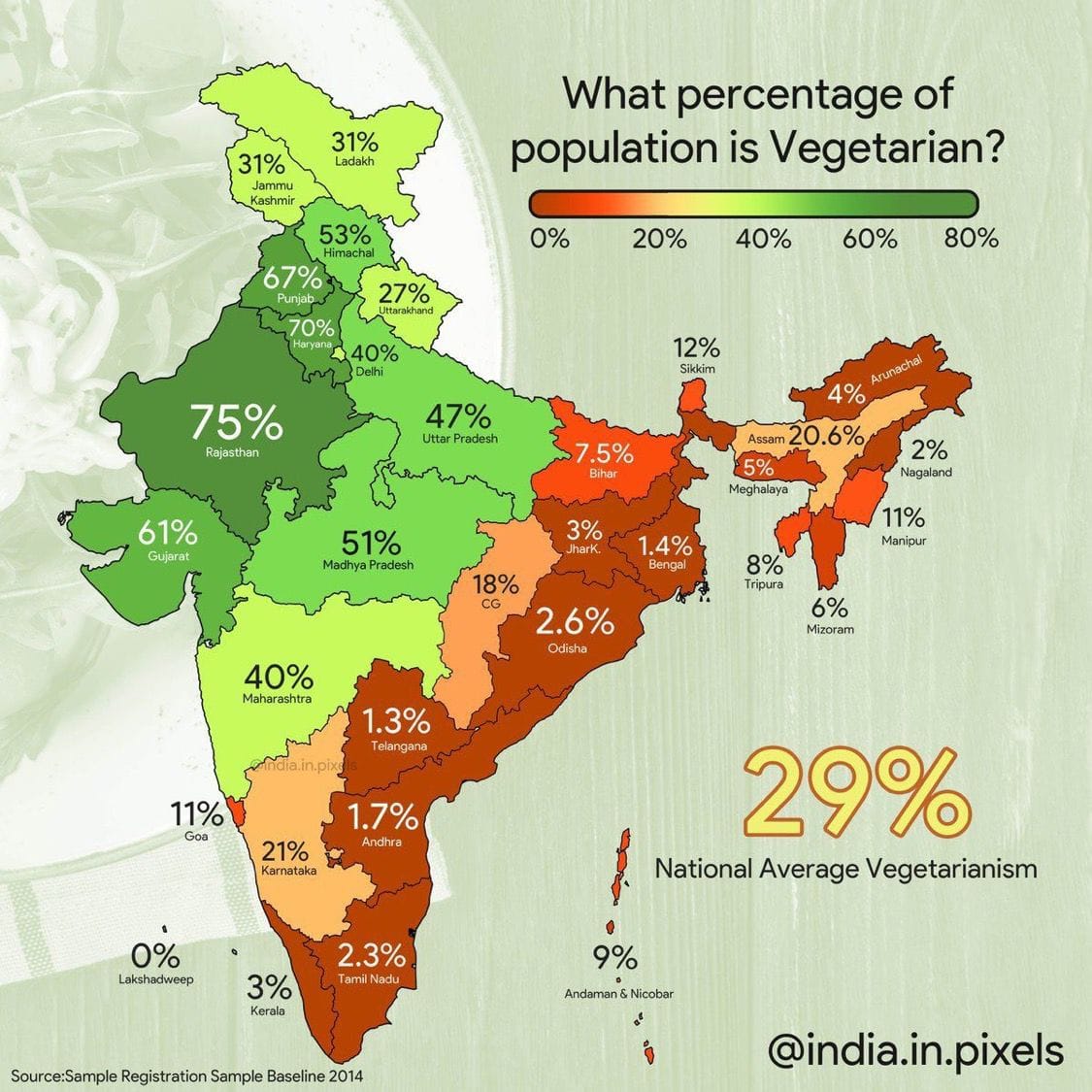WHO: WHO Dietary Recommendations: at least 5 servings (400 grams) of fruits and veggies (over and above any starchy tubers we may consume, e.g., potatoes, sweet potatoes, yams, …).
Whole Food Plant-Based (WFPB) guidelines: What does Dr Greger recommend? Dr Greger's Daily Dozen has 9 servings of F&V (3 servings of fruit + 1 serving of berries + 2 servings of leafy greens + 1 serving of cruciferous veggies + 2 servings of other veggies). People have assembled meal plans with Dr Greger's Daily Dozen -- such food plates amount to only 1400 to 1600 calories. If we eat more (say, 2,000 or 2,500 calories), we scale up these numbers and eat even more fruits & veggies!
Dr Kristi Funk's 14-point cancer prevention guidelines build upon Dr Greger's Daily Dozen, with at least 9 servings of F&V daily.
According to national surveys by Govt of India, large percentages of Indian population are vegetarian:

Wikipedia article on Vegetarianism says:
What is the history of the word 'vegetarian'? Interestingly, the word "vegetarian" was coined in early 19th century as a composition of "vegetables" + "-arian" (in the sense of agrarian). In the 21st century, do vegetarians in India consume an abundance of vegetables (and fruits)? Let's look at some data below.
Excerpts from Cardiovascular Diseases in India: Current Epidemiology and Future Directions by Prabhakaran, Jeemon & Roy, Circulation, Vol 133, No 16, p 1605-1620:
In 2016, ICRIER published a survey of 1,001 individuals in 5 metropolitan regions: NCR (Delhi, Gurgaon, NOIDA), Chennai, Mumbai, Hyderabad and Kolkata. See India's Phytonutrient Report by ICRIER, 2016. Average F&V consumption in Chennai (4.35), Hyderabad (4.05), NCR (3.19), Mumbai (3.17), Kolkata (2.81), all of which are less than 5.0 recommended by WHO (the bare minimum of F&V we should consume daily).

Publications:
- Increasing Fruit and Vegetable Consumption: Challenges and Opportunities by Sachdeva et al, Indian J Community Med (2013) Oct-Dec; 38(4): 192-197.
- India's Phytonutrient Report by ICRIER, 2016.
- Cardiovascular Diseases in India: Current Epidemiology and Future Directions by Prabhakaran, Jeemon & Roy, Circulation, Vol 133, No 16, p 1605-1620.

 Instagram
Instagram YouTube
YouTube